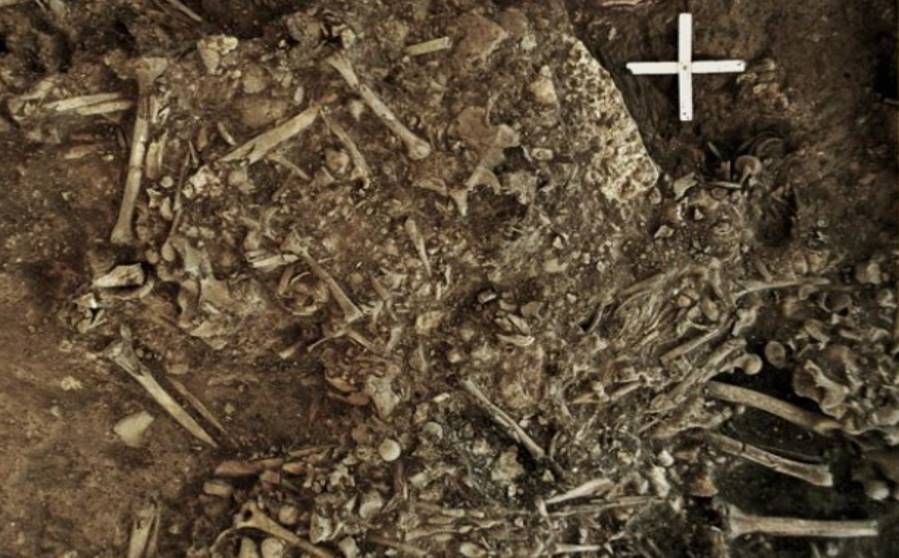
Traces of a plague from 5,000 years ago. years, which may have led to the decline of Neolithic Europeans
Scientists have found a previously unknown strain of the plague-causing bacterium in DNA extracted from human remains 5,000 years old. years. Their analysis suggests that the outbreak may have been spread among Neolithic European settlements contributing to their collapse.
syndromeoł scientistsoIn addition to the fact that the material comes from France, Sweden and Denmark, he identified an unknown strain of bacteria Yersinia pestis causing the plague. The bacteria were found in genetic material extracted from human bones, ktowhose age has been estimated at 5,000. years. According to the researchers, this strain is the closest to the genetic source of theoplague doldrums. The plague may have spread among theod ancient Europeansoin and lead to the collapse of the population at the dawn of the Bronze Age.
Analyses by scientistsow were published in the journal „Cell”.
– Plague is probably one of the most lethal bacteria to humans that has ever existed. The analyses we have conducted allow us to go back in time and look at how this pathogen, whichory had such a huge impact on us, it evolved – said Simon Rasmussen of the Technical University of Denmark and the University of Copenhagen.
The first European agricultural wspolnoty originated largely from populations migrating from the Middle East to poNorth and westod about 8000-9000 years ago. These people raised animals and lived in densely populated communities. Their settlements in Europe may have numbered tens of thousands of inhabitantsow. But these sediments disappeared about 5,400 years ago. There is a gap in the archaeological records falling precisely in this period. Their disappearance is something of a mystery, and scholars dispute as to the reasons for this phenomenon.
To better understand the evolutionary history of plague, Rasmussen and his coohe researchers searched the available genetic data from ancient humans, looking for sequences similar to more wspoThe modern strainoin the plague. In the genetic material of a 20-year-old woman who died about 5,000 years ago in Sweden, they found a strain thatore which they had never seen before. The strain had the same genes, ktore today correspond with the pulmonary form of plague, and traces of it have been found roalso in another person buried at the same site.
This strain Yersinia pestis is the oldest ever discovered. However, the particularolnterestingly, the porownn them with other strains, scientists were able to determine that it is also the most basic strain, whichory known. It probably separated from other, more genetically similar sourcesoThe roots of the disease some 5,700 years ago. Scientists believe that plague was common in the Bronze Age, and from a strain thatory is the ancestor of the strains that exist todayow, emerged new 5300 and 5100 years ago, respectively. This suggests that there were many strains at the end of the Neolithic periodoin the plague – say the researchers.
Rasmussen believes this discovery offers a new theory on the spread of the plague of mothballs. Studies of ancient human genomesow indicate a change in the EuropeanoIn about 5000-4500 years ago. Scholars link this to massive human migrations from the Eurasian steppe to Europe, but how these cultures could have displaced the Neolithic agricultural culture already present in the area remains a matter of debate. Someoers scientists believe that ancient immigrants brought the plague with them, which was the reason for the collapse of large agricultural clusters.
At this time in Europe began to appear large settlements numbering from 10 thousand. Up to 20,000. inhabitantsow. Enabled occupational specialization, new technologies and trade. But they were also an excellent breeding ground for plague. – These mega-settlements were the largest settlements in Europe at the time, ten times larger than anything else. People, animals and stored food were close together, and it is likely that all of this existed under very poor sanitary conditions. This is a textbook example of what it takes to evolve new pathogensow – explained Rasmussen.
Teamoł scientistow claims that when the Black Death appeared, large settlements were abandoned and people spread the disease by traveling along trade routes. And this, according to the researchers, is what the excavations of Neolithic settlements indicate. Started in this wayob migration spread the plague throughout Europe, ktora also found its way to a small Swedish settlement where a woman lived, in which sheorej DNA detected a strain of plague bacilli.
– The earliest forms of plague spread before the steppe migrantsowives and probably killed a significant portion of Neolithic populations,” said Kristian Kristiansen, an archaeologist at the University of Gothenburg in Sweden, et aloroposer of the study. He predicts that pochowki from large Neolithic settlements will contain even more evolutionarily ancient strainsoin plague.
Sourceobackground: Nature, Science Daily, fot. Karl-GöSj woundsögren, University of Gothenburg


